Text
From Blue City to Pink City: Experiencing Rajasthan's Cultural and Historical Diversity.
Rajasthan, located in the northwest of India, is the land of kings and warriors. This state is famous for its cultural heritage, rich history, and vibrant lifestyle. It is also known as the land of colors due to its vibrant and lively culture. Rajasthan is a blend of old and new, traditional and modern, and it is known for its architectural marvels, vibrant festivals, and mouth-watering cuisine. The state is divided into two main regions: Marwar and Mewar. The cities in the Marwar region are known for their blue-painted houses, and the cities in the Mewar region are known for their pink-painted houses. In this article, we will take you on a journey from the Blue City to the Pink City, experiencing Rajasthan's cultural and historical diversity.

The Blue City - Jodhpur:
Jodhpur, also known as the Blue City, is located in the Marwar region of Rajasthan. The city is named after Rao Jodha, the founder of Jodhpur. Jodhpur is famous for its blue-painted houses that are visible from the top of the Mehrangarh Fort. The blue color was originally used to denote the houses of the Brahmins, but later it became a trend, and now most of the houses in the old city are painted blue.
The Mehrangarh Fort is one of the most popular tourist attractions in Jodhpur. It is a massive fort built on a hilltop and offers a panoramic view of the city. The fort has seven gates, and each gate is a masterpiece of architecture. The fort also houses a museum that displays various artifacts, weapons, and costumes of the Rajput kings.
Another popular attraction in Jodhpur is the Umaid Bhawan Palace. It is one of the largest private residences in the world and is still the residence of the royal family of Jodhpur. The palace is now converted into a hotel, and tourists can stay there and experience the royal lifestyle.
Apart from these, Jodhpur is also known for its bazaars, where you can shop for Rajasthani handicrafts, textiles, and spices. The most popular bazaar in Jodhpur is the Sardar Market, which is located near the clock tower.
The Pink City - Jaipur:
Jaipur, also known as the Pink City, is located in the Mewar region of Rajasthan. The city was founded by Maharaja Jai Singh II in 1727 and is named after him. Jaipur is famous for its pink-painted houses, which were painted pink to welcome Prince Albert and Queen Victoria on their visit to India.
The most popular tourist attraction in Jaipur is the Hawa Mahal, also known as the Palace of Winds. It is a five-story palace with 953 small windows or jharokhas, which were built for the women of the royal family to observe the street below without being seen.
Another popular attraction in Jaipur is the City Palace, which is a complex of palaces, gardens, and courtyards. The palace houses a museum that displays various artifacts, costumes, and weapons of the Rajput kings. The palace also has a section where you can see the current royal family of Jaipur.
The Amber Fort, located on a hilltop, is another popular tourist attraction in Jaipur. The fort was built in the 16th century and is a masterpiece of Rajput architecture. The fort has a beautiful Sheesh Mahal, which is a hall made of mirrors and reflects light in a beautiful manner.
Apart from these, Jaipur is also known for its bazaars, where you can shop for textiles, jewelry, and handicrafts. The most popular bazaar in Jaipur is the Johari Bazaar, which is known for its exquisite jewelry and precious stones.
Cultural Diversity in Rajasthan:
Rajasthan is a land of cultural diversity, and each city has its unique culture and traditions. The state is home to many tribes, including the Bhils, Meenas, and Garasias. Each tribe has its language, customs, and beliefs.
The Rajputs are the dominant community in Rajasthan and are known for their valor, chivalry, and hospitality. The Rajputs are divided into various clans, and each clan has its traditions and customs.
Rajasthan is also known for its colorful and vibrant festivals. The most popular festival in Rajasthan is the Pushkar Fair, which is held in the town of Pushkar. The fair is a five-day event and attracts tourists from all over the world. The fair is known for its camel races, cultural performances, and traditional food.
The Gangaur Festival is another popular festival in Rajasthan, celebrated by women to honor the goddess Gauri. During the festival, women dress up in traditional attire and offer prayers to the goddess. The festival is celebrated with great enthusiasm in Jaipur and Udaipur.
The Teej Festival is celebrated by women to welcome the monsoon season. The festival is celebrated in Jaipur with great enthusiasm, and women dress up in green sarees and sing traditional songs.
The Historical Significance of Rajasthan:
Rajasthan has a rich history and is known for its architectural marvels. The state is home to many ancient forts, palaces, and temples that are a testament to its rich cultural heritage.
The Chittorgarh Fort is one of the largest forts in India and is a UNESCO World Heritage Site. The fort is located on a hilltop and has seven gates. The fort has many palaces, temples, and towers, including the Kirti Stambh and the Vijay Stambh.
The City Palace in Udaipur is another popular tourist attraction in Rajasthan. The palace is a complex of palaces, gardens, and courtyards and has a beautiful view of Lake Pichola. The palace is known for its intricate carvings, paintings, and mirror work.
The Jantar Mantar in Jaipur is a collection of astronomical instruments and is a UNESCO World Heritage Site. The instruments were built in the 18th century and are still accurate to this day.
The Dilwara Temples in Mount Abu are a group of temples known for their intricate marble carvings. The temples were built in the 11th century and are a testament to the craftsmanship of the Rajasthani artisans.
Conclusion:
Rajasthan is a land of cultural and historical diversity, and each city has its unique charm. The Blue City of Jodhpur and the Pink City of Jaipur are just two examples of the vibrant and lively culture of Rajasthan. The state is known for its architectural marvels, vibrant festivals, and mouth-watering cuisine. Rajasthan is a must-visit destination for anyone who wants to experience the rich cultural heritage of India.
To Jaipur you can hire car rentals from nearby cities like Jodhpur, Jaipur, Bikaner, etc. Royal Rajasthan Cabs as the name itself says it all provides luxurious car rentals to give their customers a Royalty feel. Royal Rajasthan is the magical solution to all your travelling desires. This online cab booking company is operating its services in Jodhpur at present. So, if you need Jodhpur to Jaipur taxi then Royal Rajasthan will leave no efforts to make your travelling experience memorable.
1 note
·
View note
Photo

-presents FEATURES Picture by ●@carolfoote_photographer Congrats on Your Feature!!! Rules for feature always tag #my_village0001 follow @my_village0001 photos must be yours . . . Beautiful Garasia women in Mount Abu Road. 📷 #Garasia #Mount_abu_road #India #people_infinity #ig_respect #turklikeben_people #ok_people #kings_works #sight_people #fivestars_people #kings_third_age #fujifilmx_au #myfujilove #gw_people #travelportrait #turkobjektif_portrait #perfectturk #YourShotPhotographer #gf_india #spencer_travel_feature #yourshotphotographer #world_bestpeople #atlasofhumanity.official #world_photography_page #hindustanifaces (at Mount Abu Road) https://www.instagram.com/p/CCP5b3tMHRi/?igshid=1nfe33qr6mf61
#my_village0001#garasia#mount_abu_road#india#people_infinity#ig_respect#turklikeben_people#ok_people#kings_works#sight_people#fivestars_people#kings_third_age#fujifilmx_au#myfujilove#gw_people#travelportrait#turkobjektif_portrait#perfectturk#yourshotphotographer#gf_india#spencer_travel_feature#world_bestpeople#atlasofhumanity#world_photography_page#hindustanifaces
0 notes
Link
#Faizal Garasia#Construction Loans#Construction Loans Canada#residential construction financing#Construction mortgages
0 notes
Text
Rann Utsav Booking 2019-2020 - Kutch Rann Utsav | Rannutsavonline.com

What is Rann Utsav?
Rann Utsav is an awesome festival of Kutch, Gujarat, India where a carnival of Music, Dance, and natural beauty of White Rann is greatly experienced.
There is much more than that when one visit under the full Moon during such festival.
Kutch Rann Utsav is the shimmering landscape that gives the enchanting moments of this Fest, which feels like Heaven on Earth during Festival Time.
It’s a Family holiday destination to explore fun moments and store in cameras for a lifetime.
What is an astonishing engagement over the culture of Kutch?
Kutch is mostly famous due to their traditional culture of handicrafts where the main handicrafts of the district are embroidery of ethnic style, Patchwork, terracotta, pen knives and nutcrackers.
In the culture of their handicraft work, there are categories in which the following things are concluded in their traditional and regional work:
• Embroidery
Mochis or shoemakers were taught Kutch embroidery 300 years ago by a Muslim wanderer in Sindh and that is what started the tradition.
However, Kutch embroidery clubbed with Sindh tradition owns styles such as Suf, Khaarek, and Paako, Rabari, Garasia Jat and Mutava.
• Silver Work
Kutch is famous for its superior silverwork, both of the design and engraving of jewellery.
• Pen-Knives / Nut- Crackers
The artisans, who made swords during the royal family`s patronage, are now producing the penknives and nutcrackers. The iron bars are reduced to workable small pieces and further worked by using a forging machine
• Iron Bell with Copper Coating
Copper coated Iron bell is originally part of Sindh region that had migrated to Kutch several centuries ago where these bells signify the seven musical notes to give a pleasant sound.
The sound gives a feel of being in the vastness and calms the mind
• Sea-Shell Toys
Seashell is the outer case of soft-bodied animals called molluscs, are made in Bhuj for toys and dolls.
• Hand Block Printing
Kutch is the homeland of a variety of hand printing textiles in which there are Ajrakh prints, Batik prints and Rogan painting are so important among them.
• Wood Carving
The Harijan people living in Dumaro and Ludia are master craftspersons of wood carving which is one of the best handicrafts of Kutch
• Mudwall Painting
Famous at designs of mor (peacock) Popat (Parrot) anghadi (Fingers) Vinjno (Fan).
About their folk dances and folk music:
Their culture is also attractive with their folk dance and folk music.
There are different forms of folk dance such as Dandiya Raas and Kutchi Gajiyo.
There are various instruments such as Daklu, Damaru, Dholak, Duff, Flute, Ghaghar, Khanjari, Manjira and Jhanjha, Murli, Nagara, Sarnai, Tabla which are used for music; however musical instruments are linked with various aspects of people and their religion.
This is how Rann Utsav is a great choice to experience the culture of Kutch having various packages.
And moreover, don’t miss out to check our website for the latest package which is starting from October 2019 – February 2020

Book the packages and do enquire for the same
Visit our website: https://www.rannutsavonline.com/
Helpline Number
+91 8469 355 050 +91 8469 335 050
Email us: [email protected]
1 note
·
View note
Text
For four days, the family of the deceased Hitendra Garasia of Udaipur continues to sit in Delhi, the Russian Embassy also spoke | चार दिनों से दिल्ली में उदयपुर के मृतक हितेन्द्र गरासिया के परिवार का धरना जारी, रसियन दूतावास ने भी की बात
For four days, the family of the deceased Hitendra Garasia of Udaipur continues to sit in Delhi, the Russian Embassy also spoke | चार दिनों से दिल्ली में उदयपुर के मृतक हितेन्द्र गरासिया के परिवार का धरना जारी, रसियन दूतावास ने भी की बात
Hindi News Local Rajasthan Udaipur For Four Days, The Family Of The Deceased Hitendra Garasia Of Udaipur Continues To Sit In Delhi, The Russian Embassy Also Spoke उदयपुरएक घंटा पहले कॉपी लिंक दिल्ली में धरना देते परिजन। उदयपुर जिले के खेरवाड़ा क्षेत्र में करीब साढ़े चार महीनों से रूस में मृतक हितेंद्र गरासिया के परिजनों द्वारा शव को भारत लाने की मांग को लेकर दिल्ली में पीड़ित परिवार का आंदोलन…

View On WordPress
0 notes
Text
Culture of Rajasthan

We at Travel Places India, providing Blog Related Information to Visit India – Culture of Rajasthan
A land in which royalty is the manner of living. A land in which colorings constitute emotions. A land in which celebrations realize no limitations and usher joyful celebration amongst everyone. And the land that has persisted its numerous variety of cultures with inside the maximum benevolent ways.

Welcome to Rajasthan, the ‘Cultural Capital of India’! One of the maximum appealing traveler locations inside the world, the ‘Land of Maharajas’ is one such location that showcases the maximum exuberant colorings and cultures. From the costumes to people’s meals habits, non-secular celebrations to social gatherings, Rajasthan continues to have adhered to its numerous traditions and wealthy cultures. Let’s embark on a sojourn through this imperial land and realize why it’s miles fondly known as the ‘Cultural Capital of India’; let’s realize approximately the cultural factors of Rajasthan!
History of Rajasthan
Rajasthan, the land of Kings, has royal grandeur and excellent records; it’s miles a captivating and fascinating nation of India. It is understood for plenty courageous kings, their deeds; and their hobby in artwork and architecture. Its call means “the land of the rajas”. It became additionally referred to as Rajputana (the country of the Rajputs); whose codes of chivalry fashioned social mores simply as their frequently sour and persistent feuding ruled their politics.

The first point out of the phrase Rajasthan comes from the works of George Thomas and James Tod. However, western Rajasthan with jap Gujarat become an element of “Gurjaratra” or Gurjarabhumi, land of Gurjars. The neighborhood cants of the time use the expression Rājwār, the area of land of lords, latterly corrupted with the aid of using the British to Rajputana.
The history of Rajasthan is going lower back as some distance as Indus Valley Civilization, the inspiration of Rajasthani network took form with the upward push of Western Middle Kingdoms which include Western Kshatrapas, who had been the successors to the Indo-Scythians who invaded the region of Ujjain and mounted the Saka era.

Saka calendar (additionally been followed as Indian countrywide calendar) is utilized by the Rajasthani network and adjacent regions which include Punjab and Haryana. With time their social systems were given more potent reorganizations giving the beginning to numerous martial sub-ethnic groups (formerly referred to as a Martial race however now out of date term). Rajasthanis emerged as the most important traders throughout medieval India. Rajasthan becomes many of the critical facilities of exchange with Rome, the eastern Mediterranean, and Southeast Asia.
The first strains of mortal agreements that have been discovered around Brahmavatra, Mehrangarh and Rewari areas have been anticipated to be lesser than times stretch.
Origin
Rajasthan has a record this is vintage because of the records of Indus Valley and Harappan Civilization. The first strains of mortal agreements that have been discovered around Brahmavatra, Mehrangarh and Rewari areas have been anticipated to be lesser than times stretch. Further evidence discovered all throughout the kingdom, made it very obtrusive that this a part of the country turned into first of all inhibited via way of means of a numerous variety of tribal groups. Among those tribes, the Bhils, Minas, Lohars, Garasias, and Sahariyas have been the maximum dominant ones.

The tribal regions have been finally conquered and dominated via way of means of Arjunyas, Kushans, and numerous different earlier than the status quo of the Rajputana extended family in Rajasthan. Today, though, Rajput cultures and traditions are being broadly speaking followed, numerous components of the kingdom nonetheless observe its tribal ethnicity and practices.
Rajasthani Costume

Traditionally guys put on dhotis, kurta, angarkha, and paggar or safa (type of turban headgear). Traditional Chudidar payjama (puckered trousers) regularly replaces dhoti in one-of-a-kind regions. Women put on ghagra (lengthy skirt) and kanchli (top). However, get dressed fashion adjustments with lengths and breaths of huge Rajasthan. Dhoti is worn in one-of-a-kind approaches in Marwar (Jodhpur area) or Shekhawati (Jaipur area) or Hadoti (Bundi area). Similarly, there are some variations among pagri and safe notwithstanding each being Rajasthani headgear. Mewar has the way of life of paggar, while Marwar has the way of life of safa.
Culture
Being a mixture of faiths, practices, and diversities, Rajasthan shows off a colorful show of cultures. Life on this barren region land is all approximately conventional approaches to living. Be it the architecture, costumes, cuisine, neighborhood dialects, arts and crafts, or it's gala’s and festivals, you may continually locate a completely unique attraction and a plethora of celebrations at the same time as journeying around this country.

Today, Rajasthan has advanced like every other Indian country. However, not like them, this excellent country has persevered all its cultural components and in no way hesitates to introduce the outer global with them. Let’s delve deep into the cultures of Rajasthan and feature a livelier glimpse of ways existence prospers on this barren region land of India.
Food and Cuisine of Rajasthan
Rajasthani cooking became prompted with the aid of using each the war-like existence of its population and the provision of elements on this arid region. Food that would close for numerous days and might be eaten without heating became preferred. The shortage of water and sparkling inexperienced greens have all had their impact on the cooking.

Famous dishes which Rajasthan is understood for are Dal-Bati-Churma, Bikaneri Bhuji, bajre ki roti (millet bread) and lashun ki chutney (warm garlic paste), mawa kachori Mirchi Bada, Pyaaj Kachori and ghevar from Jodhpur, Alwar ka Mawa (Milk Cutlet), malpauas from Pushkar and rassgollas from Bikaner.
Rajasthani Music and Dance
The Ghoomar dance from Jodhpur Marwar and the Kalbeliya dance of Jaisalmer have received worldwide recognition. The folk tune is a massive part of the Rajasthani culture. Kathputli, Bhopa, Chang, Teratali, Ghindr, Kachchhighori, and Tejaji are exemplifications of conventional Rajasthani culture.

The Ghoomer dance is achieved on numerous auspicious activities like fairs & festivals. It is called `Ghoomer`, from the `ghoomna` of Ghaghra i.e. the flowing of Ghaghra, an extended skirt of the Rajasthani ladies. There is an incredible grace because the skirt aptitude slowly whilst the ladies peoples twirl in circles, their faces protected with the assist of the veil. The players in Ghoomar cotillion sway their various ghagra which can be fat in embroidery oils and it’s also decorated with glass oils. They are dressed withinside the conventional Ghaghra and choli with chunaris. They deck up in conventional silver rings and glass bangles. The Ghoomar is achieved throughout ladies’ gatherings just like the ritual of Haldi throughout a wedding, or to entertain a queen in her non-public quarters, etc.
Folk songs are usually ballads that relate heroic deeds and love stories; and spiritual or devotional songs are referred to as bhajans and banis which can be regularly observed through musical devices like dholak, sitar, and sarangi also are sung.
Language
With Hindi, because the maximum spoke the language, you may continually discover the combination true of nearby essence most of the Rajasthanis. Each of the locations has its very own dialect and; you could additionally discover new phrases or linguistic scriptures as you flow across the complete the Desert Capital of India. Though language is numerous aspects, you’ll continually discover all of the paperwork and dialect similarly soothing on your ears.
Architecture

The architectural fashion in Rajasthan is as numerous as its people. You get to prove a number of the exemplary websites of Islamic, Hindu, colonial, or even present-day structures. Rajasthan ought to be your subsequent area to go to in case you are a lover of structure and respect enormous buildings, background websites, and extraordinary types of design. The Jain temple in Ranakpur turned into constructed in the fifteenth century. The fashion of structure is M’ru-Gurjara Architecture (patterns that consist of diverse systems and shapes). It is a western Indian structure fashion with diverse domes and carvings at the pillars and the ceilings.
Handicrafts
If you go to Rajasthan, make certain to order some hours or maybe an afternoon for shopping. You will discover stunning carpets, garments, jewelry, and more, which can be all made through the neighborhood people. Any leather-based object is commonly camel leather-based – they use it to make journals, footwear, and bags. The carpets are crafted from the hand-knitting strategies and similar to Persian carpets; they have a geometrical layout and borders. There also are many miniature objects produced from purple sand or clay as toys for children or ornament portions with bells connected to them. You can also discover safah or pagri (conventional headwear) in a maximum of the stores that you could deliver returned as a reminiscence from the place.
Shopping in Rajasthan could be very affordable and is a possibility now no longer to be missed. Antiques are an entire exceptional thing. If you want to acquire antiques, there are numerous dealers in Rajasthan. However, do a little study on which dealers are accredited so you are privy to wherein you should purchase them. Most antiques are matters that have been the possessions of the kings.
If you like viewing exceptional antiques, do now no longer worry, as you absolutely will now no longer be disappointed. There are diverse museums in Rajasthan with a remarkable series of antiques.
Fairs & Festivals
The lifestyle of Rajasthan is especially pushed through its gala’s and fairs. Be it a spiritual competition or a local one, a party for goodwill, or to mark any of the historic activities of the past, the amazing Thar Desert celebrates all its activities with splendid enthusiasm and vigour. While maximum of its gala’s and fairs observe the Hindu ideals and practices, the complete of the kingdom participates within side the celebrations and make each of them a gala event.
Diwali, Gangaur, Teej, and Makar Sankranti are a number of the maximum respected fairs in India’s Desert Capital. Also, because the lifestyle of Rajasthan has an everlasting bond with camels, the kingdom hosts some activities to commemorate this bond all through the year. Kite Festival, Desert Festival, Pushkar Mela, and Jaipur Literature Fest are a number of the maximum attractive and colorful annual fairs in this part of the country.
Related Post:
Places to visit in Rajasthan
Things Must Keep while Travelling to Rajasthan | Travel Places India
Rivers Flows in Rajasthan | Travel Places India
Things to do in Rajasthan
0 notes
Photo

OBJECT OF THE WEEK (24-30 August, 2020) DEV SANGRAH Terracotta Mural Depicting Deities & Ancestral Heroes facbook link : https://www.facebook.com/onlineIGRMS website link : https://igrms.com/wordpress/?page_id=852 Due to spread of COVID-19 pandemic the museums throughout the world are closed but identifying different innovative ways to remain connected to their visitors. Indira Gandhi Rashtriya Manav Sangrahalaya (National Museum of Mankind) has also taken up many new initiatives to face the challenges posed by this pandemic. In one such step it is coming up with a new series entitled ‘Object of the Week’ to showcase its collection from all over India. Initially this series will focus on the masterpieces from its collection which are considered as unique for their contribution to the cultural history of a particular ethnic group or area. These masterpieces belong to the “AA” & “A” category. There are 64 objects in these categories. The potters of Molela, Rajasthan are well known for their creativity on terracotta murals. Dev Sangrah is the terracotta mural on which 20 deities and ancestral heroes are depicted in a traditional manner. The main deities shown in this mural are Ganesha, Durga, Saraswati, Shiva, Krishna and Surya. Among the ancestral heroes Pankhi Ghora, Dhola Maru, Sadu Mata, Lala Fula Ethwari Mata, and Hand Mata are important. Generally, separate murals are made for deities and ancestral heroes for worship, but when all are depicted at one place, it is known as Dev Sangrah. The upper portion of the mural, known as saja, comprises a top portion of the temple and is decorated with a floral parapet wall and turret. Dev Sangrah reflects the utmost creativity of an artist who created it to depict an accumulated presence of the deities on a single panel. Such decorative piece of art is kept by different folk and tribal communities of Rajasthan such as Bhil, Garasia, Rabari, Kumhar, Sutar, Jaat etc. Accession No.: 96.946 Local Name – DEV SANGRAH Tribe/Community – Kumhar Locality – Udaipur, Rajasthan Measurement -Height -182.88 cm, Width- 121.92 cm Category – ‘AA’ #devsangrah #kumhar #potter #potters #molela #terracotta #terracottamural #deity https://www.instagram.com/p/CERRBBuD9p3/?igshid=kulvql85iks0
0 notes
Link
#Faizal Garasia#financing major home renovation#home renovation#Construction Loans#Construction Loans Canada
0 notes
Photo

Existen 705 grupos étnicos repartidos por todo el territorio indio. Etnias como Garasia, Jat o Bishnoi viven en el área de influencia del desierto del Thar, en el estado del Rajasthan y una de las señas de identidad es la ornamenta o joyería que llevan las mujeres en sus brazos, tobillos, manos, orejas o nariz. El estilo de estos ornamentos en el Rajasthan data de la época de los Mogoles y se le denomina Meenakari. . . https://www.instagram.com/p/B4BRRGgIq4i/?igshid=rss9abdaoyot
0 notes
Text
Mount Abu Tour Operator
Rajasthan “Hill Station” Mount Abu – Mount Abu is a popular hill station in the Aravalli Range in Sirohi district of Rajasthan state in western India, near the border with Gujarat. The mountain forms a distinct rocky plateau 22 km long by 9 km wide. The highest peak on the mountain is Guru Shikhar at 1,722 m (5,650 ft) above sea level. It is referred to as ‘an oasis in the desert�� as its heights are home to rivers, lakes, waterfalls and evergreen forests. The nearest train station is Abu Road railway station: 28 km away.
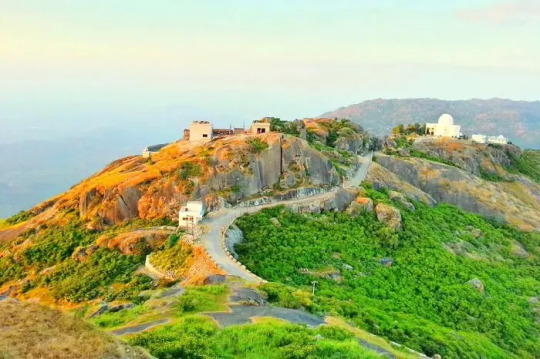
Nakki Lake – Located at the heart of Mount Abu, Nakki Lake is the first manmade lake in India. 11,000 meters deep and about a quarter of a mile wide, a trip to Mount Abu is considered incomplete without visiting Nakki Lake. A number of legends surround the origin of the lake, including one that states that Nakki Lake is said to be a sacred lake for the proud Garasia Tribe; but the fact is undeniable that a visit to this place brings you close to the beauty of nature and serenity. As you take a boat ride over the tranquil waters, you can gaze at the mesmerizing hills, the interestingly shaped rocks, and the lush greenery that surrounds the lake. It was the Nakki Lake where Mahatma Gandhi’s ashes were immersed back in 1948 and the Gandhi Ghat was constructed nearby, that’s all the more reason to visit this place. From nature lovers to photographers, the Nakki Lake has clean blue waters and beautiful surroundings that add to the romantic element of the lake, making it a must visit destination for everyone.
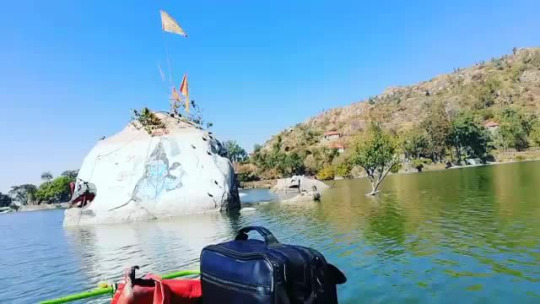
Guru Shikhar –Guru Shikhar is one of the peaks of the Aravallis, which has the honor of not only being the highest point in Mount Abu, but in the entire Aravali Range. Standing at 1722 meters above sea level, Guru Shikhar is a must visit destination in Mount Abu for the amazing panoramic views it offers of Mount Abu and the surrounding Aravalis, and also for spiritual reasons. Right before you reach the peak, you will find a temple dedicated to Dattatreya, who is believed to be the son that was given to the sage Atri and his wife Anasuya by the holy trinity, Brahma, Vishnu, and Shiva. The peak itself is dedicated to Dattatreya and the temple, dedicated to Lord Vishnu, is an important pilgrimage point for Vaishnavites. Right near the peak is another temple, this one dedicated to Ahilya. On the peak, there is also a huge bell with ‘1141 AD’ inscribed on it. While the original bell had begun to disintegrate and was replaced by a newer bell, its tones are still very captivating and reach a long distance. It is a common practice among visitors to head the peak to try and ring the bell as hard as they can, only to witness the sound-filled serenity in it.
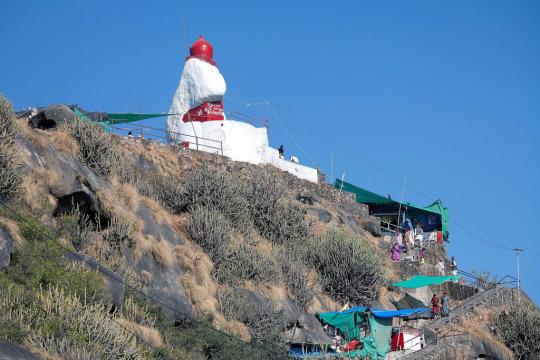
Toad Rock View Point – Known for being surrounded by a number of strangely shaped rocks, Nakki Lake offers numerous photo ops to visitors. One of the most popular destinations near Nakki Lake however, has to be the Toad Rock View Point. Located on the main trekking trail near the Lake, the Toad Rock has often been referred to as the mascot of Mount Abu. The massive rock structure is an excellent illustration of igneous rocks found in amazing shapes and is shaped, as the name suggests, like a toad. One of the most frequented places in the hill station; people visit this place out of sheer curiosity. It is pretty easy to climb the rock and the views that it offers of the Nakki Lake and the surrounding greenery are unparalleled. Apart from the novelty of the rock itself, the breathtaking scenery from atop just adds to whole experience, making it well worth your while.

Dilwara Jain Temple – The Dilwara Jain Temple in Mount Abu is considered to be one of the most beautiful Jain pilgrimage sites in the entire world. While it looks like a basic temple from the outside, when you enter, you can marvel at the extraordinary architecture and the marvelous stone carvings that grace the temple. The interiors of the temple truly showcase craftsmanship at its best. Built between the 11 th and the 13 th centuries AD, the temples display intricately carved ceilings and pillars that won’t fail to inspire you. Surrounded by lush green hills, the ambiance of serenity and peace at the Dilwara Temples is unparalleled. The temple is divided into 5 sections, namely: 1. Shri Mahaveer Swami Temple: Constructed in 1582, this temple is devoted to Lord Mahaveer, the 24th Tirthankara of Jain’s. 2. Shri AdiNath Temple/Vimal Vasahi Temple: Built by Vimal Shah, the Minister of the Solanika ruler of Gujarat in 1031 A.D., this is the oldest temple of all, and is dedicated to Shri Adinath Ji, the first Jain Trithankara. 3. Shri ParshavNath Temple/Khartar Vasahi Temple: Built by the Mandika clan in between 1458-59 A.D., this temple features a tall pinnacle along with four big Mandapas. 4. Shri Rishabdaoji Temple/Peethalhar Temple: Most of the statues here are built using ‘Pittal’ (Brass), and has been built by Bhima Shah, a minister from the Gujarat dynasty. 4. Shri Nemi Nath Ji Temple/Luna Vasahi Temple: Built in 1230 A.D. by two brothers, Tejpal and Vastupal, this temple is dedicated to the 22nd Tirthankara of Jainism – Shri Nemi Nathji. Open every day from 12.00 pm to 5.00 pm, the temple is open to all, and is quite an exquisite sight to behold when in Mount Abu.
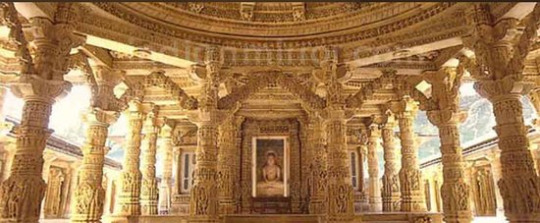
Trevors Tank Mount Abu – Trevor’s tank, a crocodile park, is a manmade crocodile breeding spot which is located at a distance of about 5 kilometres from Mount Abu. The spot offers amazing scenic beauty and a great spot for crocodile, bird, and other wildlife (like the black bear) sightings. The lush green surroundings make it quite a popular picnic spots that is always worth a visit. Trevor’s Tank is a small but pristine ecosystem for crocodiles, and creates a unique blend between manmade creations and the natural environment. Being located at a hill station, Trevor’s Tank can be visited all throughout the year, owing to the mild weather it enjoys all the time. However, it might be a good idea to avoid the monsoon season, as that may hinder your explorations slightly. Whether you are a shutterbug or want to watch some birds or other wildlife, Trevor’s Tank is a destination to add on your Mount Abu bucket-list.
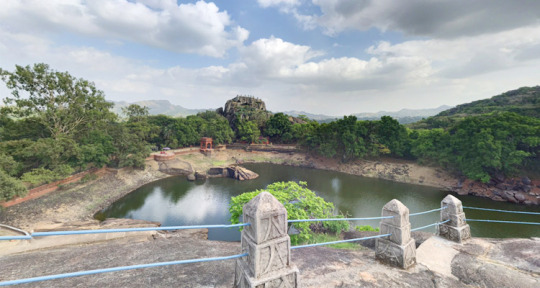
Peace Park Mount Abu – Nestled in between two famous Aravali peaks, the Guru Shikhar and Achalgarh, the Peace Park in Mount Abu is a part of the Brahma Kumaris’ establishment. With an ambiance that creates the perfect blend of serenity and tranquillity, the park offers a beautiful backdrop for silence and peaceful recreation. At the Peace Park, one can visit the rock garden that houses a wide variety of Cactaceae, the orchard, citrus corner, and view the numerous floral displays that include coleus, shrubs, hibiscus, creepers and climbers, and an exquisitely beautiful rose garden. The park also has a number of areas, like a stone cave and huts, where people can meditate in a tranquil environment. The Brahma Kumaris also provide a guided tour of the park, and you can also watch a short video film that explains interesting meditation concepts. This place of solitude in the lap of nature is something you must experience.
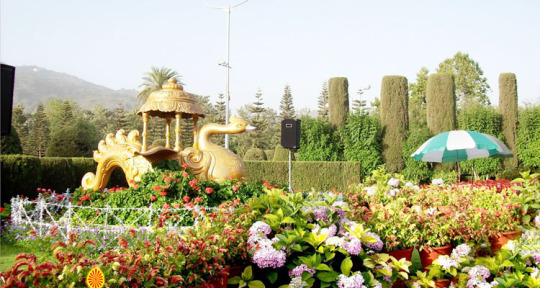
Mount Abu Sanctuary – There is hardly any dearth of wildlife sanctuaries in Rajasthan, and among them is this gem named the Mount Abu Sanctuary. Located across the oldest hill range in the country, the Aravalis, the sanctuary covers a huge area, and is home to a rich variety of wildlife. From the flora, fauna, and the avian species that can be seen here to the breathtaking views and sceneries offered, as well as the eco-tourism opportunities, the sanctuary is definitely a favorite among the many visitors to Mount Abu. The vegetation starts from being sub-tropical thorn forests at the foothill region, and varies up to sub-tropical evergreen forests at higher altitudes. Home to a number of rare and endangered species of animals, the sanctuary houses leopards, jungle cats, sambhar, wolves, Indian civets, hyenas, Indian foxes, jackals, bears, wild boars, common langurs, pangolins, Indian hares, mongoose, hedgehogs, and porcupines, among others. With the presence of over 250 avian species, the sanctuary also makes for an amazing destination for bird watchers.
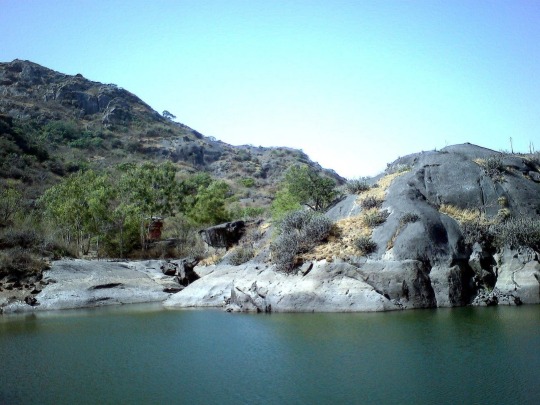
Lal Mandir Mount Abu – Located on Delwara Road, near the Dilwara Jain Temple, is this small temple dedicated to Lord Shiva. The temple offers a very peaceful ambiance and is considered as one of the most ancient holy places located in Mount Abu. A small and beautiful temple, the Lal Mandir gets its name from the fact that all the walls of the temple have been painted red. The temple is one of the must visit spots in Mount Abu, popular among the religious tourists as well as others. The temple is also quite well-known for being a Swayambhu ‘ Shiva Temple, so named because the idol placed inside the temple can be seen wearing a ‘jenau’.
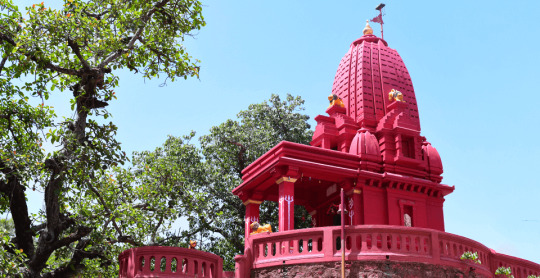
Visit - https://rajasthantourplanner.com/rajasthan-tour-operators/mount-abu-tour-operator.html
0 notes
Link
0 notes
Text
राजस्थान के इस गरासिया जनजाति में शादी से पहले बच्चा होने पर ही कर सकते है शादी
राजस्थान के इस गरासिया जनजाति में शादी से पहले बच्चा होने पर ही कर सकते है श���दी #Rochak #Amazing
भारत के अलग अलग हिस्सों में रहने वाली जनजातियों की कुछ परम्पराएं बहुत ही अमे���िंग है ऐसी ही एक जनजाति है गरासिया जो की मुख्यतः राजस्थान और गुजरात के कुछ हिस्सो में निवास करती है इस ट्राइब के युवा पहले पसंद की लड़की के साथ लिव इन में रहते हैं.
बच्चे पैदा होने के बाद ही दोनों को शादी के बंधन में बंधने की अनुमति मिलती है यदि दोनों के लिव इन में रहने के बावजूद भी बच्चे नहीं हुए तो वे अलग अलग हो जाते…
View On WordPress
0 notes
Text
Traditional craft of India: Handicraft on stamps part II
Despite rapid social and technological changes in India, the use of craft products is an integral aspect of an Indian’s social life. Handicraft aims to process materials by hand with hand tools. The result of this can be a useful thing or a decorative. The tradition of making handicrafts is deeply frozen in the social norms of Indian society. In any of the handmade products, a crafter transfers an area of their cultural heritage in ideas, forms, material, and work. They’re skilled employees whose profession relies on manual skills. Their main tools are the power of work strategies; handicraft contains plenty of implicit data which grows every year, aboard with skills. The order and apprentice system has been widely used to transfer skills and implicit data. This aspect of handicraft is recognized by India Post, in 2019 Indian postal services has issued a series handicraft on stamps. The illustrated ‘handicraft on stamps’ series is well known and G.I tag recognized by the Indian government.
Handicrafts generally are theme-based and well-organized art in the hand of master craftsmen. India Post has at least commemorated five types of master craftsmen specimens on handicraft on stamps.
Bronze handicraft of Karnataka
Karnataka is famous for its craft called ‘bidriware’ from Bidar, as it is the chief center for the manufacturing of this unique craft. It is a craft created on a metal plate-like zinc, copper, tin and lead. The article of Bidar was developed in the 14th century CE during the administration of Bahamani sultanate in the south. The technique of this art is influenced by Persian art. It is said that the first time it was brought to India by noted Sufi Khwaja Moinuddin Hasan Chisti in the form of utensils. To create bidar one has to follow eight-stage processes. The famous utensils that are in demand in the Nagamangala area near Mysore are the Bidriware like an ornamental jug, bowls, plates pen holders, candlesticks and even paper knives.
This rare and unique handicraft has also obtained the Geographical Indications (GI) registry. In 2018 India Post illustrated this magnificent native art of Karnataka in a series of stamps called handicraft on stamps. Bidriware is also practice in a state like Telangana, Bihar, Utter Pradesh, and West Bengal.
Kutch Embroidery
According to historians Kutch embroidery was brought about by ‘Kathi’ cattle breeders. Later on, they settled down in the Gujarat area and created some fine needlework that displayed a variety of elements, designs, themes, patterns and moods known as Kutch embroidery. This embroidery has been practice and created in Gujarat-kutch are for centuries and between 16th and 17th centuries Kutch embroideries masterpieces were exported to western countries. It is also believed that mochis or shoemakers were taught Kutch embroidery 300 years ago by a Muslim wanderer in Sindh and that is what started the tradition. The embroidery of Kutch further clubbed with the native tradition of Sindh tradition which evolved six styles like Suf, Khaarek, and Paako, Rabari, Garasia Jat and Mutava.
In March 2013, these colorful handicrafts of Kutch received the registry of Geographical Indications (GI). India Post also issued a stamp illustrating this craft in series handicraft on stamps in 2018.
Sikki Pas Products of Bihar
Considered auspicious by the natives Sikki Pas handicraft involves the practice of weaving bamboo and cane into ornaments and an object of utility is a way for women to vent out their creative instincts. Since the historical time the area of Bihar been home to many dynasties which paved way too many craft development. Sikki Pas craft utilizes grass available in the surrounding that has served as a vital raw material in making a variety of products since ancient times. There is hardly a ritual where it is not taken into account, figures of deities and votive offerings are woven during festivals, young women weave baskets known as ‘Pauthi’ which are used to exchange gifts in a wedding, household items such as boxes, toys, jewelry, and murals are also crafted out of this grass. Sailesh puja, the only festival of the Moosahar tribe involves a wide range of colorful sikki products for ritualistic uses. Boxes made of sikki known as pauti are given to daughters by parents on the occasion of their wedding.
This native and sophisticated craft of Bihar has received the Geographical Indications (GI) tag. India Post has also issued a stamp in 2018 illustrating this unique craft.
Jaipur Blue Pottery
Jaipur Blue Pottery is widely recognized as a traditional craft of Jaipur. His art of Rajasthan is influence by Turko-Persian in origin. The name ‘blue pottery’ comes from the vibrant cobalt blue dye used to color the pottery. It is one of many Eurasian types of Blue and White Pottery and related in the shapes and decoration to Islamic pottery and more distantly to the Chinese pottery. Some of these potteries are semi-transparent and mostly decorated with bird and other animal motifs. Being fired at very low temperature makes them fragile. The range of items is primarily decorative, such as ashtrays, vases, coasters small bowls and boxes for trinkets.
India Post has issued this unique pottery art on stamp through its 2018 stamp series handicraft on stamps. This stamp is also a reorganization of its Geographical Indications (GI) tag.
Maddalam of Palakkad
Madhalam is a percussion instrument that usually accompanies art forms like Kathakali. It is a round-shaped drum made out of jack wood or the wood of the Jackfruit tree. The wood is given a basic shape at first and then polished well. It is tied tightly with ropes. The two sides that are meant to play are made up of leather. Both these sides are made in such a way that they produce different sounds. The instrument is tied around the waist of the person playing this instrument.
In 2018, this fascinating handicraft related to one of the eight classical dances of India is illustrated on stamp through the initiative of India Post in the series of Handicraft on stamps. Its idea was initiated to celebrate the unique craft of India and spread awareness about this age-old tradition.
India’s Government has utilized a great number of resources for the restoration and sustenance of this traditional handicraft. There are many contemporary artists and designers who have tried to uplift this traditional craft making and increase it’s marked to preserve them. To further encourage and make it a successful career and profession for many, the institute of Craft and Design are established in Jaipur. Yet these efforts are not enough because the actual creator of this art is on the decline. Due to the cost and production of the material these artisan communities cannot effort to mass-produce this handicraft. Hence the value to this product increases and demand has decreased. As the trends are improvising hand-made stuff has a gradual rise in the market making Indian handicraft a timeless commodity. This unique aspect had increased the appeal of the craft and a gradual rise in its demand is seen in recent years due to its style, antiquity, and ethos. Indian handicrafts are unique and beautiful in their own ways which deserved a unique position in India’s social aspect and market.
Share
The post Traditional craft of India: Handicraft on stamps part II appeared first on Blog | Mintage World.
0 notes
Photo

The following Players are selected for the Training Camp of Azad Cricket Coaching Centre Mumbai For The New Academic Year 2017-18(i.e. October 2017 to September 2018).They are————U-16 Age Group 1. Rajesh Jilajeet Mourya. 2. Om Sawle Singh. 3. Shahid S Dalvi. 4. Hitesh Ganesh Sahu. 5. Sunny Sanjay Pandey. 6. Naman Pandurang Dalvi. 7. Navneet Ravi Pachimalta. 8. Shivam Mirgale. 9. Rajan Bhagwan Dayal Gupta. 10. Rishikesh Ramchandar Vemula. U-19 Age Group 1. Yograj P Yadav. 2. Aditya P Mishra. 3. Vijay Mangal Yadav. 4. Mukund S Mishra. 5. Harish Siken Yadav. 6. Ajay Basudev Paney. 7. Vaibhav Sunil Mishra. 8. Mrityunjay C. S. Choudhary. 9. Moin Aslam Memon. 10. Arjun Ramgresh Valmiki. 11. Vaibhav Tyagi. 12. Shafaq Aslam Shaikh. 13. Dev A Sharma. 14. Shahid Bhuddin Shaikh. 15. Sankalp Vijay Kadam. 16. Primce J Garasia. 17. Chirag Parmar. 18. Bhavesh Dwivedi. 19. Sachin Yadav. 20. Ganesh Jaiswar. 21. Sahil N Kale. 22. Afroz Khan. 23. Kunal Parlapelli. 24. Rohit Balaji Dudhbhate. 25. Sumit Singh. 26. Shubham Narendra Tilekar. 27. Vijay Yadav. 28. Shayam Chirapal Patil. 29. Nitesh Kumar Brijraj Shukla. 30. Bhargav Prakasash Shingala. U-23 Age Group 1. Jayesh Ratan Kanojiya. 2. Mahesh Kumar Yadav. 3. Mohd. Saem Usmani. 4. Mohd. Najeeb Riyaz Mulla. 5. Kaustubh K Chonkar. 6. Arun P Devendra. 7. Ravi Mukesh Thakkar. 8. Omkar S Kale. 9. Nikhil Sanjay Shinde. 10. Jaspal Arora. 11. Piyush Roshan Agarwal. 12. Kedar S Karalkar. 13. Kailas Rajendra Lotankar. 14. Chetan Mokal. 15. Shivam Satish Singh. Open Age Group 1. Shabbir Kasim Patel. 2. Abhishek Jayanti Singh. 3. Rahul Yadav. 4. Ganesh Bharat Naik. 5. Pratik Bhausaheb Jadhav. 6. Datta Shinde. 7. Akshay Ashok Dhaval. 8. Manoj C Shah. 9. Mayur Chavan. 10. Sai Kiran Amballa. The following above mentioned players are requested to complete their admission formality with Azad Cricket Coaching Centre Mumbai on or before Friday, 20th October 2017. Admission Time:-(Tuesday to Friday) Evening (05:00 p.m. to 06:00 p.m.). For further details contact Azad Cricket Coaching Centre Mumbai Coach Salim Ahmed on 9892276968/9323969961. (at Azadcricketcoachingcentre Mumbai)
0 notes
Text
Google Earth created an eye-opening way to 'step inside' some of the world's most remarkable homes
If you've ever wondered what it would be like to grow up in a completely different society, there's a fun way to find out using Google Earth. With the latest update to Google's "This is Home" project, you can take a look into twenty-two "traditional" homes around the world.
Using the Street View feature, you can step inside a fascinating assortment of dwellings, from mud huts to farmhouses. It's an eye-opening experience that lets you look around the house, study the various objects and furniture, and read all about the people who live there.
Some of the images offer insight into people's struggle to maintain their traditional homes and lifestyles amid environmental, political and, economical challenges while others give a history lesson on places you probably don't know much about. The virtual tour is great for anyone with an itch to travel, and it makes a great learning experience for children who are curious about how other fellow Earthlings live.
And the best part is, you don't need to buy a plane ticket to visit.
Check out some of the world's most remarkable homes:
SEE ALSO: The 13 Most Massively Popular Websites You've Never Heard Of
Siyava, Rajasthan, India
This home belongs to Tej Bai and her family. They are part of the Garasia tribe, and their home was built in traditional Garasia style with local materials.
Uros Titimarka, Peru
These homes float on the island of Uros Titimarka in Lake Titicaca. People have been living on the lake's 87 islands for hundreds of years, and didn't come into contact with the modern world until the mid-1960s.
Wadi Rum, Jordan
This is the home of Nasser Awwad Nasser Al Zalabiyah and his family. The area is one of the first protected regions in Jordan that allowed its original inhabitants to stay on their lands. A drought dried up all but four of the areas 40 natural springs, and homes like this are becoming rare as people are forced to move into more modern houses.
See the rest of the story at Business Insider
0 notes
